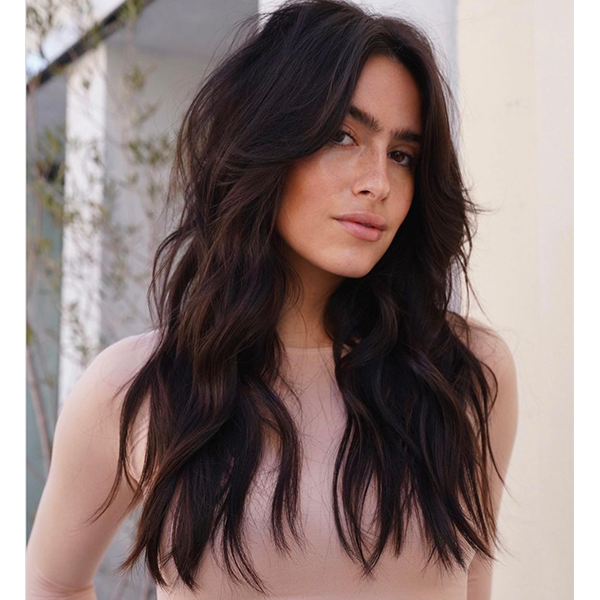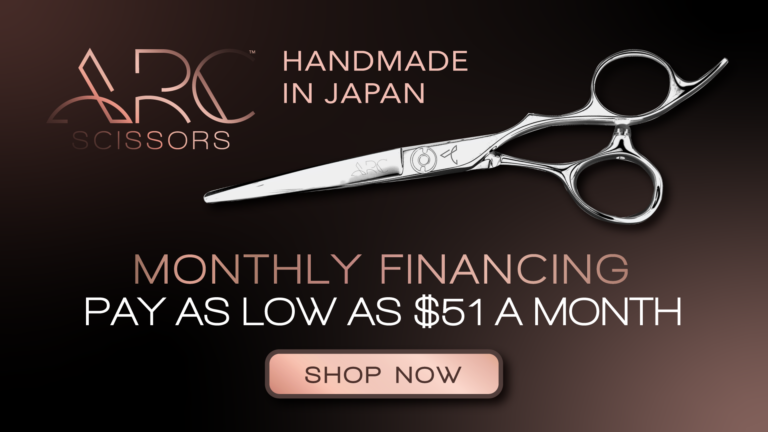Invisible Layers: What This Haircut Trend Really Means
Everything You Need to Know About This Texturizing Technique
Move over overly-texturized cuts—soft, subtle texture is taking over. This airy technique is making its mark as the go-to texturizing strategy for 2023, and we don’t mind at all. But what are invisible layers? We tapped some serious cutters to answer that very question AND they’re sharing everything you need to know about this haircut trend.
Keep scrolling for a texturizing roadmap, tips for achieving this cut on finer-haired clients and consultation strategies for successful appointments. Plus, the main reason why you SHOULDN’T call them Invisible Layers behind the chair—srsly.
What are Invisible Layers?
The first thing to know is that these layers are NOT invisible. In fact, the term “Internal Layers” is recommended when discussing this technique with a client to avoid any confusion during your consultation (more on that later 😉.) Don’t believe us? Let Los Angeles-cutter Sal Salcedo (@salsalhair) explain.
“[The term] invisible layers can be misleading, since they are not fully invisible. They do on the other hand, expand the hair from the inside and—if done correctly—can make the hair appear fuller with more movement throughout,” he explains.
Picture this: Traditional layers are external, visible and help create shape. Internal layers are inside of the established shape, creating air pockets that expand the hair and create volume. “Think of traditional layers as a Christmas tree,” explains Sal. “Internal layers would be like sitting underneath the tree and looking up. Internal layers are the little pockets between the branches, allowing the air to move evenly throughout,” he adds.
Remember: This technique is not about removing weight, it’s about being strategic for the hair that is left. Each client and haircut is different, so be mindful when approaching this technique for each service.
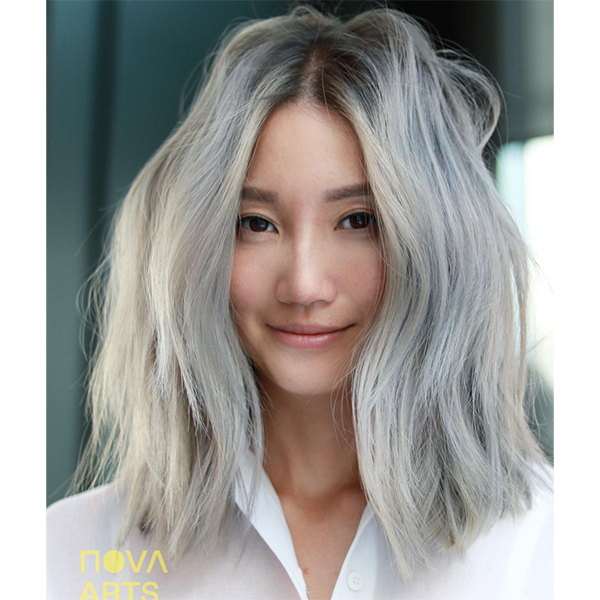
Photo Credit: Instagram via @salsalhair
Give Fine-Haired Clients Long-Lasting Volume—Without Product Overload
Are your fine-haired clients looking for volumizing solutions? We thought so. Instead of packing on the product or intense styling techniques (an over-teased crown perhaps?) internal layers can offer a more permanent solution.
“Internal layers are perfect for finer-haired clients because it allows them to have a cut that isn’t blunt or boxy,” explains #ONESHOT winner John George (@johnwgeorge). “Using this cutting technique allows you to maintain a defined perimeter but also have soft, subtle movement within without compromising their density further,” he adds.
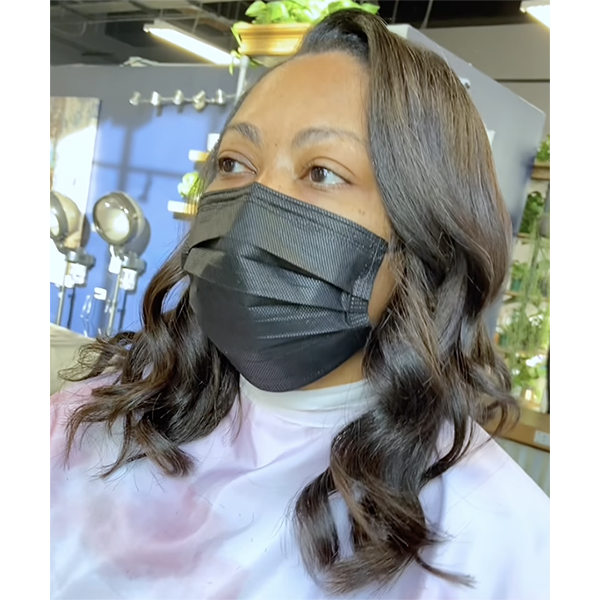
Use this placement roadmap to avoid creating holes or thinning the hair out:
- Areas to avoid:
-
- The roots: “My rule of thumb is stay two to three inches below the base,” Sal recommends. Short hair pushes longer strands so creating layers at the top could result in short spiky pieces!
-
- The perimeter: Remember, this technique is all about the interior. So stay away from this area to avoid over-thinning (and ruining the overall shape.)
- Areas with the MOST impact:
-
- The mids: The hair tends to be the thickest in the occipital and temporal areas, and can handle the airy effect of internal layers.
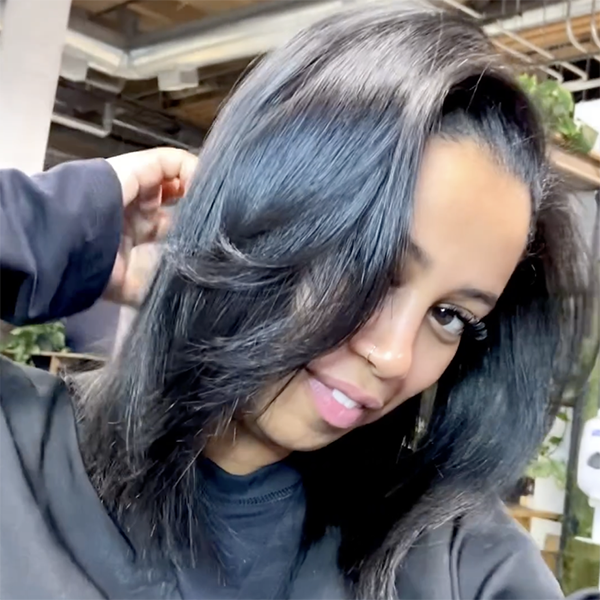
Photo Credit: Instagram via @johnwgeorge
Bob Length Clients Requesting Internal Layers? Read This.
With shorter lengths, overdirection can create graduation FAST. So keep your tension low and be mindful of the hair’s natural fall. For John, he prefers shoulder-length cuts for achieving perfect internal layers.
“Shoulder length is right where gravity starts to become a factor,” he explains. “Blunt, shoulder length hair tends to lack movement and build weight along the perimeter. So, internal layers are the perfect way to break that weight build up.”
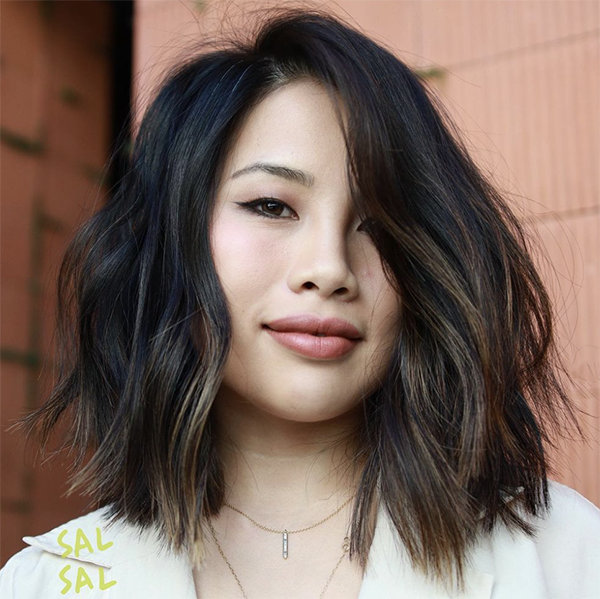
Photo Credit: Instagram via @salsalhair
Switch Up Your Technique to Create Texture—Not Your Scissor
Every cutter has their own style when texturizing, and that is what makes haircuts so customizable, but there is one these pros agree on: Don’t grab a texturizer. We know it sounds crazy, but this technique isn’t about A TON of layers. Remember, it’s giving the hair more room to move as it would naturally. Here’s a few go-to cutting techniques from the pros:
- Soft Slide Cutting: This technique gives you complete control over the angle of the shear and how much hair is being removed. For this, John prefers to use his Paragon II from ARC™ Scissors. They’re made specifically for dry cutting and the sharp blade gives him a consistent cut on every section.
15% OFF ALL ARC™ Scissors—Grab the pro’s go-to pair with our code BTC2023
- Notch Cutting: Similar to point cutting, notching allows Sal to remove weight but on a much smaller and controlled scale. “I keep the angle of my sections neutral and make smaller cuts,” he explains. “This acts like Velcro, pushing the texture closer to the top without over-texturizing.”

Photo Credit: Instagram via @salsalhair
3 Consultation Tips for Explaining Internal Layers to Clients
Whether your client is wary about losing length or their hair weighing them down, we gathered some must-know consultation tips to set their appointment up for success.
- Tell them what this technique can do for their everyday style. “Explain to them that internal layers will give their haircut a fuller result and have more movement,” explains Sal.
- They don’t have to compromise length. No matter the length, internal layers can help give the style longevity, explains Los Angeles-based cutter Yuki Nakatami (@yukistylist). Longer lengths can benefit from more movement, while shorter lengths become lighter and airy.
- Explain the WHY. “Always make sure they know why you’re choosing internal layers as opposed to triangular or square layers. Even if they don’t know [technically] what that means, help them understand by explaining the ‘why’ behind your choice,” explains John.
Want More Trends? Here Are The BIGGEST Haircut Trends:
More from
ARC™ Scissors
-
Blowouts
Bob Styling Guide: 5 Ways To Style Short Hair
-
BTC Hair Trend Report
The Biggest Haircut Trends of 2024
-
Dry-Cutting
Bang Breakdown: How To Cut 2024’s Top Fringe Trends
-
Dry-Cutting
2024 Fringe Guide: How To Consult, Cut & Style Trendy Bangs
-
BTC University
10 Gifts & Stocking Stuffers on Every Hairdresser’s List This Year
-
BTC Events
BTC “On Tour” Nashville Recap: Everything You Missed
-
BTC Hair Trend Report
The Biggest Haircut Trends of Fall & Winter 2023
-
BTC Hair Trend Report
Layering Guide: How To Cut & Style With Confidence
-
Bobs
The ’90s Bob: How To Cut & Style This Trending Haircut
-
Facebook Lives
Volume Guaranteed: Try This Layering Technique For Fine Hair
-
Barbering
How To Style The Biggest Men’s Summer Trends
-
Bobs
The Biggest Haircut Trends of Summer 2023
-
Bobs
The French Bob: How to Cut it
-
Bobs
The Bixie: 3 Cutting Techniques to Master the Look
-
Brunette
Trend Breakdown: Hailey Bieber’s Glazed Brunette
-
Barbering
2023’s Top 9 Hair Trends For Men
-
BTC Hair Trend Report
2023 Fringe Guide: How To Cut This Year’s Biggest Trends
-
BTC Hair Trend Report
2023 Hairstyling: 11 Trends You Need To Know
-
BTC Hair Trend Report
2023’s Biggest Haircut Trends
-
Bobs
Hailey Bieber’s “Preppy, Contoured Bob” Trend: What You Should Know
-
BTC University
4 Styling Secrets For Butterfly Layers
-
This Year’s BIGGEST Products: 2022’s Most Talked About
-
Bobs
The Biggest Winter Haircut Trends To Kick Off 2023
-
Bobs
TREND ALERT: Wednesday Addams-Inspired Fringe





